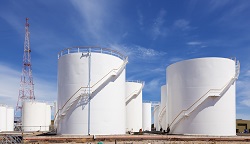Technology to design production lines and products for adaptability
Manufacturing systems or products and services, designed with specific needs in mind, often lose their value over time for a variety of reasons. These include changes in stakeholder demands, growth in technological opportunities, depreciation, and new laws and regulations. Changes to the original scope to address these issues can be costly and time consuming, often prohibitively so. The EU-funded project 'Architecting manufacturing industries and systems for adaptability' (AMISA)(opens in new window) addressed this problem by designing adaptability into systems to provide maximum value to stakeholders with easy and rapid delivery of updated products and services. Project partners sought to demonstrate that the newly developed technology would also be harmonised with relevant intelligent manufacturing system projects and European regulatory frameworks. AMISA validated the new quantitative methodology through a six pilot projects, providing solid evidence that it is generic and tailorable, scalable and cost effective. In particular, AMISA helped a food packaging and processing company upgrade its cap applicator machine. This next-generation machine is able to apply different size caps on different size liquid packages. Another achievement was the introduction of a fibre-placement head mounted on top of buckling arm robot in the production line of a leading manufacturing company. The new architecture combines several components in two portions of the fibre-placement head, thereby reducing component costs and work. Through the newly developed methodology, AMISA also provided further insight into re-designing a company's vehicle localisation system — the control sub-system for unmanned ground vehicles. The new architecture combines several components in two portions of the sub-system. Another project achievement was to help information and telecommunications company re-design its solid-state power amplifier. The key redesign feature was to combine certain components in the system, thereby eliminating relatively expensive interfaces. AMISA delivered a step change in the performance of the EU industry through more economically compatible products and services that respond to customer needs. Adaptability is expected to save approximately 20 % in cost and product development time, and increase product useful time by 25 %.







